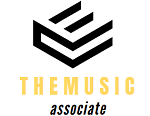
Can Red Light Therapy Be the Recovery Tool You Need?
Marchel
- 0
Red light therapy has gained popularity in recent years as a tool for improving skin health, reducing inflammation, and even promoting hair growth. But can it also be used as a recovery tool for athletes and fitness enthusiasts? At its core, red light therapy involves exposing the body to low-level wavelengths of red and near-infrared light. These wavelengths penetrate the skin and trigger a range of biological effects, including increased blood flow, improved cell metabolism, and reduced inflammation.
While the exact mechanisms behind these effects are still being studied, many researchers and practitioners believe that red light therapy can play a valuable role in supporting recovery from sports and exercise-related injuries and fatigue.
Here are just a few of the potential benefits of red light therapy for recovery:
1- Reduced Inflammation Inflammation is a natural response of the body to injury or infection.
However, chronic inflammation can lead to tissue damage and pain. Red light therapy has been shown to reduce inflammation in a variety of contexts, including muscle strains and joint pain. By reducing inflammation, red light therapy may help athletes recover more quickly from injuries and minimize the risk of long-term damage.
2- Improved Muscle Recovery Red light therapy has been shown to stimulate the production of ATP, the energy currency of cells.
This can help improve muscle recovery and reduce fatigue after exercise. In addition, red light therapy may help increase the production of collagen, a key component of muscle tissue. This could help improve muscle strength and reduce the risk of future injuries.
3- Increased Blood Flow Red light therapy has been shown to increase blood flow to the muscles and other tissues.
This can help deliver more oxygen and nutrients to the cells, improving recovery and reducing the risk of muscle damage. Improved blood flow may also help remove waste products from the muscles, reducing soreness and stiffness.
4- Pain Relief Many athletes and fitness enthusiasts experience pain and discomfort after intense exercise.
Red light therapy has been shown to have analgesic effects, reducing pain and promoting relaxation. This can help athletes recover more quickly and feel more comfortable during their workouts.
Overall, red light therapy shows great promise as a recovery tool for athletes and fitness enthusiasts. However, it’s important to note that the research in this area is still in its early stages, and more studies are needed to fully understand the potential benefits of red light therapy for recovery.
If you’re interested in trying red light therapy for yourself, it’s important to work with a qualified practitioner who can help you develop a safe and effective treatment plan. Additionally, be sure to consult with your healthcare provider before starting any new treatment or exercise program.
In conclusion, red light therapy may be an effective recovery tool for athletes and fitness enthusiasts. By reducing inflammation, improving muscle recovery, increasing blood flow, and providing pain relief, red light therapy can help support recovery from sports and exercise-related injuries and fatigue. If you’re interested in trying red light therapy for yourself, be sure to work with a qualified practitioner and consult with your healthcare provider first.
